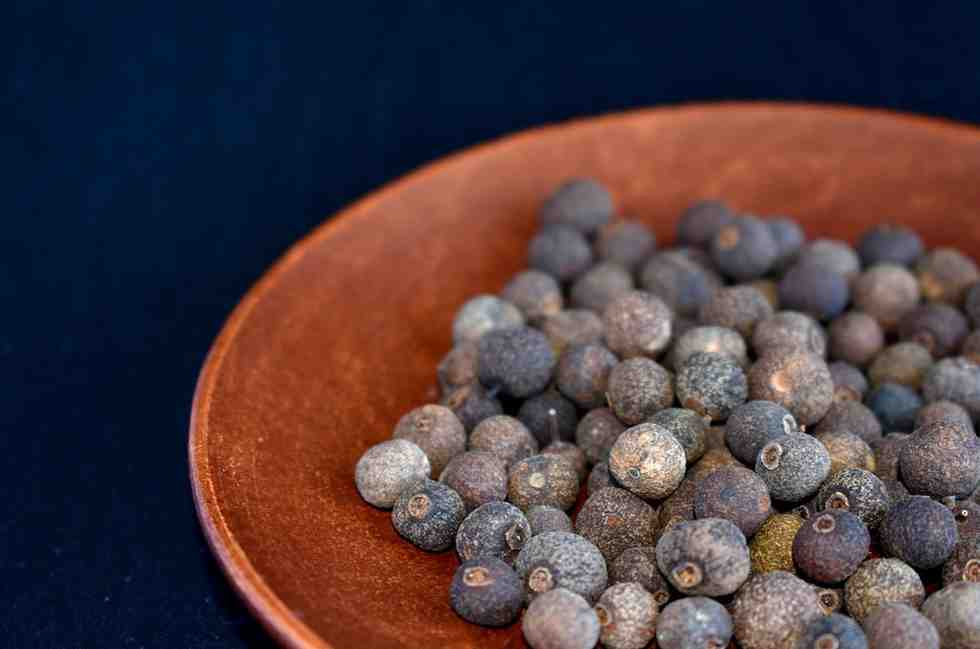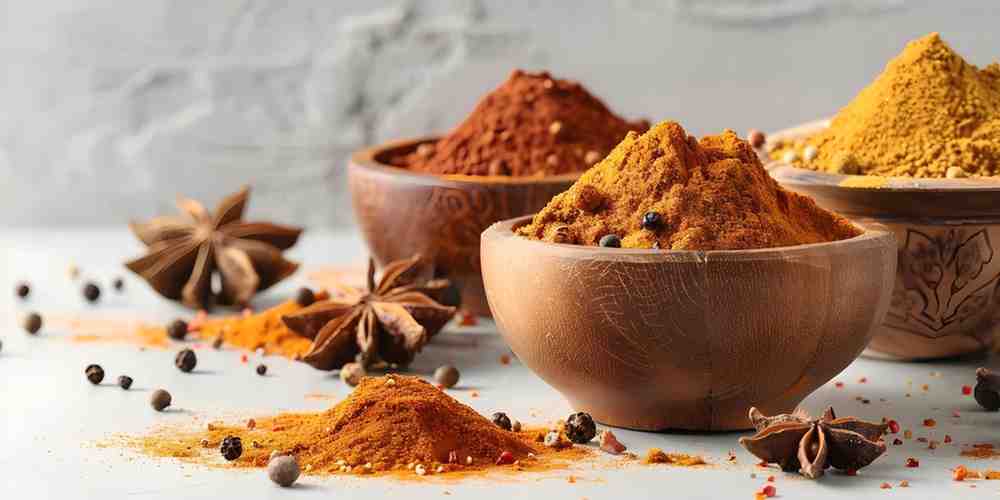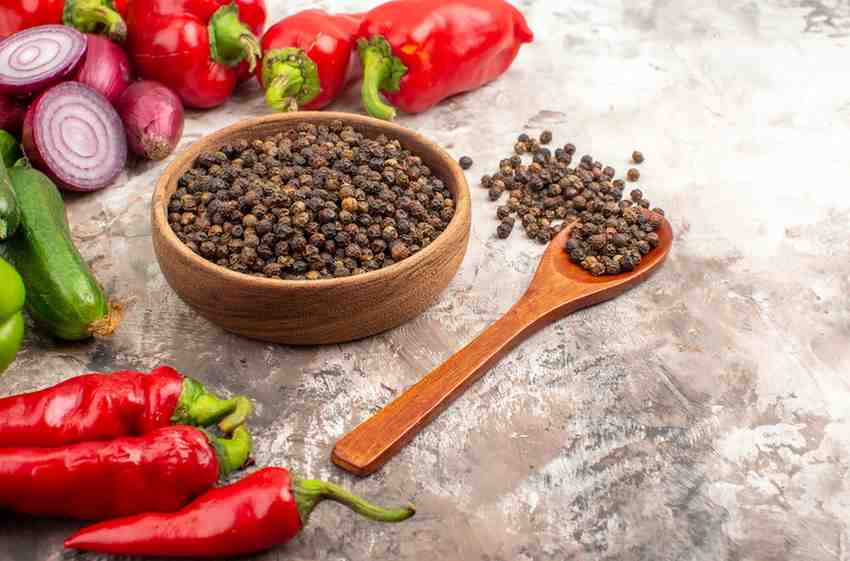Allspice, scientifically called Pimenta dioica, combines the flavors of cinnamon, nutmeg, and cloves. Originating from the Caribbean, particularly Jamaica, it has been a vital part of both culinary traditions and medicine. Known for its unique flavor, allspice has also been used for its health benefits for centuries. This article explores the fascinating history of allspice, its journey through global trade, and its significant uses in traditional medicine.
Origin and History of Allspice
Indigenous peoples of the Caribbean, particularly the Taíno, were the first to recognize the value of allspice. They used it to preserve food, which was crucial in their hot climate, and to add flavor to dishes. In addition, they discovered its medicinal uses early on.
How Allspice Got Its Name
In the 16th century, Spanish explorers encountered this spice during their travels. They noticed that it combined the flavors of cinnamon, nutmeg, and cloves, leading them to call it “allspice.” Shortly after, they introduced it to Europe, where it quickly gained popularity in cooking and natural remedies.
Spread of Allspice in Global Trade
Once allspice reached Europe, its demand soared. English cooks began using it in both savory and sweet dishes, while Middle Eastern cultures blended it into their spice mixes.
- English Cuisine: Allspice became a staple in English recipes, especially in spiced cakes and meat dishes.
- Middle Eastern Cuisine: Middle Eastern cuisines incorporated allspice into their traditional spice mixes for stews and roasted meats.
Jamaica Becomes a Leading Producer
Jamaica soon became the largest producer of high-quality allspice. The island’s warm, tropical climate and fertile soil allowed allspice trees to thrive. To this day, Jamaica remains the top supplier of premium allspice, known for its deep, rich flavor.
Botanical Information and Harvesting Process
The Allspice Tree
The allspice tree (Pimenta dioica) grows best in tropical environments. It is an evergreen tree that can reach heights of up to 40 feet.
- Tree Characteristics: The tree produces small white flowers, which later develop into green berries. These berries contain the essential oils that give allspice its distinctive flavor.
- Growth Conditions: Allspice trees need warm temperatures, humidity, and well-drained soil to grow well.
Harvesting and Processing Allspice
The harvesting of allspice requires careful timing. Farmers pick the berries while they are still green to preserve their full flavor. After harvesting, they dry the berries to intensify the taste and darken their color.
- Harvesting: Workers gather the berries before they ripen fully.
- Drying: The berries are left to dry in the sun until they turn dark brown.
- Grinding: After drying, the berries are ground into powder, which is then used in both cooking and herbal medicine.

Ethnobotanical Uses of Allspice
Allspice has been more than just a flavor enhancer; it has long been recognized for its medicinal properties. Indigenous Caribbean peoples used it to treat various ailments, and modern science has confirmed many of its health benefits.
Traditional Medicinal Uses
Allspice was traditionally used to ease digestive problems and provide relief from muscle pain. Its active compound, eugenol, has anti-inflammatory and pain-relieving properties. Here are a few ways people used allspice in natural medicine:
- Digestive Aid: It helped reduce bloating and indigestion.
- Pain Relief: Allspice oil was applied to muscles and joints to soothe pain and inflammation.
- Anti-inflammatory: It was used to reduce swelling and treat conditions such as arthritis.
Cultural and Spiritual Significance
Beyond its practical uses, allspice held cultural importance for many indigenous peoples. They used it in spiritual rituals, where its scent and properties symbolized healing and protection.
- Ceremonial Use: Allspice was often burned in rituals to purify the air and bring blessings.
- Symbolism: For some communities, the spice represented strength, healing, and protection.
Impact of Allspice on Global Trade
After European explorers discovered allspice, it quickly became a valuable commodity in global trade. Merchants saw the potential of this spice not only for its flavor but also for its ability to preserve food.
Allspice as a Valuable Commodity
In the 17th and 18th centuries, allspice became one of the most sought-after spices in Europe. It was especially useful for preserving meat and other perishable foods before the invention of refrigeration.
- Food Preservation: Its antimicrobial properties helped keep food fresh for longer periods, which was crucial before modern food storage methods.
- Global Demand: Merchants exported allspice worldwide, increasing its popularity and driving up demand in various markets.
Culinary, Health, and Practical Benefits of Allspice

Allspice’s warm and complex flavor has made it a popular choice in kitchens around the world. Beyond its culinary uses, it also offers several health benefits, making it a valuable spice for both cooking and natural remedies.
Culinary Uses of Allspice
Allspice plays a vital role in many traditional dishes, particularly in Caribbean, Middle Eastern, and European cuisines. Its unique combination of flavors makes it versatile, complementing both sweet and savory recipes.
Common Dishes Featuring Allspice
You can find allspice in various well-loved dishes around the world. Here are a few common dishes where allspice is an essential ingredient:
- Caribbean Jerk Seasoning: Allspice is a key component of jerk seasoning, which flavors grilled chicken, pork, and fish in Jamaica. It gives the dish a spicy, warm undertone.
- Pumpkin Pie: In North America, allspice is used in pumpkin pie spice mixes, adding depth to the flavor of pies, lattes, and other autumnal treats.
- Meat Stews: Middle Eastern and Eastern European cuisines often include allspice in spice blends for lamb and beef stews. It enhances the natural flavors of the meat and adds richness to the dish.
- Sausages and Marinades: Allspice can be found in European sausages and marinades. Its robust flavor pairs well with fatty meats like pork, providing balance to the dish.
Best Flavor Pairings
Allspice has a complex flavor that works well in both sweet and savory recipes. Its ability to complement other spices and ingredients makes it versatile in the kitchen.
- Spice Pairings: Allspice combines beautifully with cinnamon, nutmeg, cloves, and ginger. These spices create a warm, aromatic blend that is perfect for both desserts and savory dishes.
- Ingredient Pairings: It pairs well with meats like pork, beef, and lamb, as well as root vegetables such as carrots, sweet potatoes, and squash. In baking, allspice enhances the flavors of apples, pears, and pumpkins.
Substituting Allspice in Recipes
If you don’t have allspice in your pantry, there are a few substitutions that can mimic its flavor. Here are some options:
- Cinnamon, Nutmeg, and Clove Mix: A simple blend of these three spices can replicate the taste of allspice in most recipes.
- Garam Masala: In savory dishes, garam masala can serve as a good substitute due to its warm, spicy profile.
Health Benefits of Allspice
In addition to its culinary applications, allspice offers several health benefits. Many of its traditional uses in medicine have been supported by modern scientific research. Below are some of the key health advantages of incorporating allspice into your diet.
Rich in Antioxidants
Allspice contains powerful antioxidants, which help protect your body from oxidative stress. These antioxidants neutralize harmful molecules called free radicals, which can damage cells and lead to chronic diseases.
- Protects Cells: By reducing oxidative stress, allspice helps prevent cellular damage, which can lower the risk of conditions like heart disease and cancer.
- Supports Healthy Aging: The antioxidants in allspice may help slow the aging process by protecting cells from damage over time.
Anti-Inflammatory Properties
Allspice’s active compound, eugenol, has anti-inflammatory effects. Chronic inflammation contributes to many health problems, such as arthritis, heart disease, and diabetes. By reducing inflammation, allspice may help lower the risk of these conditions.
- Eases Joint Pain: People who suffer from arthritis may find relief from the anti-inflammatory properties of allspice.
- Improves Heart Health: Reducing inflammation can also protect against heart disease by improving blood vessel function.
Digestive Health
Traditionally, allspice has been used to treat digestive issues. It promotes healthy digestion by stimulating the digestive tract and easing symptoms like bloating and indigestion.
- Reduces Bloating: Allspice can help relieve bloating by relaxing the digestive muscles and encouraging the release of digestive enzymes.
- Improves Gut Health: The compounds in allspice support gut health by aiding the breakdown of food and improving nutrient absorption.
Pain Relief and Antiseptic Qualities
Allspice contains eugenol, a natural compound that acts as a mild anesthetic and antiseptic. For centuries, it has been used to relieve pain and prevent infections.
- Soothes Muscle Pain: Applying allspice oil to sore muscles can reduce pain and tension, making it a natural remedy for muscle aches.
- Prevents Infections: Its antibacterial properties make allspice useful for cleaning minor cuts and scrapes, reducing the risk of infection.
How to Store and Use Allspice in Your Pantry
Proper storage of allspice ensures that it remains fresh and flavorful for as long as possible. When stored correctly, allspice can last for years without losing its potency.
Storage Tips for Maximum Freshness
To maintain the flavor and aroma of allspice, it’s important to store it in the right conditions. Here are a few storage tips:
- Use an Airtight Container: Exposure to air can cause allspice to lose its flavor over time. Always keep it in an airtight container.
- Store in a Cool, Dark Place: Keep allspice away from heat and direct sunlight, as both can diminish its potency.
- Avoid Moisture: Moisture can cause clumping and spoil the spice, so ensure that your storage area is dry.
Shelf Life of Allspice
Allspice has a long shelf life when stored properly. Whole allspice berries will remain fresh longer than ground allspice.
- Whole Berries: These can last up to four years, retaining their flavor and potency.
- Ground Allspice: Once ground, allspice remains fresh for about two to three years, though it’s best to grind it just before use for maximum flavor.
Frequently Asked Questions About Allspice
Here are answers to some common questions about allspice, its uses, and how it differs from other spices:
What is allspice made of?
Allspice comes from the dried, unripe berries of the Pimenta dioica tree, native to the Caribbean.
Can I substitute allspice?
Yes, you can use a blend of cinnamon, nutmeg, and cloves as a substitute. Garam masala is another good option for savory dishes.
Is allspice the same as mixed spice?
No, mixed spice is a blend of several spices, while allspice is a single spice made from one plant. However, allspice is often included in mixed spice blends.
How long does allspice last?
Whole allspice berries can last up to four years if stored properly, while ground allspice is best used within two to three years.
What does allspice taste like?
Allspice tastes like a combination of cinnamon, nutmeg, and cloves, with a slightly peppery finish.

